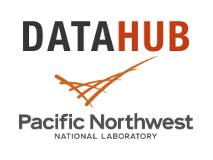Journal Article
Geoscientific Model Development, vol. 12, iss. 2, pp. 677-698, 2019
Authors
Katherine Calvin, Pralit Patel, Leon Clarke, Ghassem Asrar, Ben Bond-Lamberty, Ryna Yiyun Cui, Alan Di Vittorio, Kalyn Dorheim, Jae Edmonds, Corinne Hartin, Mohamad Hejazi, Russell Horowitz, Gokul Iyer, Page Kyle, Sonny Kim, Robert Link, Haewon McJeon, Steven J. Smith, Abigail Snyder, Stephanie Waldhoff, Marshall Wise
Abstract
Abstract. This paper describes GCAM v5.1, an open source model that
represents the linkages between energy, water, land, climate, and economic
systems. GCAM is a market equilibrium model, is global in scope, and operates
from 1990 to 2100 in 5-year time steps. It can be used to examine, for
example, how changes in population, income, or technology cost might alter
crop production, energy demand, or water withdrawals, or how changes in one
region's demand for energy affect energy, water, and land in other regions.
This paper describes the model, including its assumptions, inputs, and
outputs. We then use 11 scenarios, varying the socioeconomic and climate
policy assumptions, to illustrate the results from the model. The resulting
scenarios demonstrate a wide range of potential future energy, water, and
land uses. We compare the results from GCAM v5.1 to historical data and to
future scenario simulations from earlier versions of GCAM and from other
models. Finally, we provide information on how to obtain the model.
